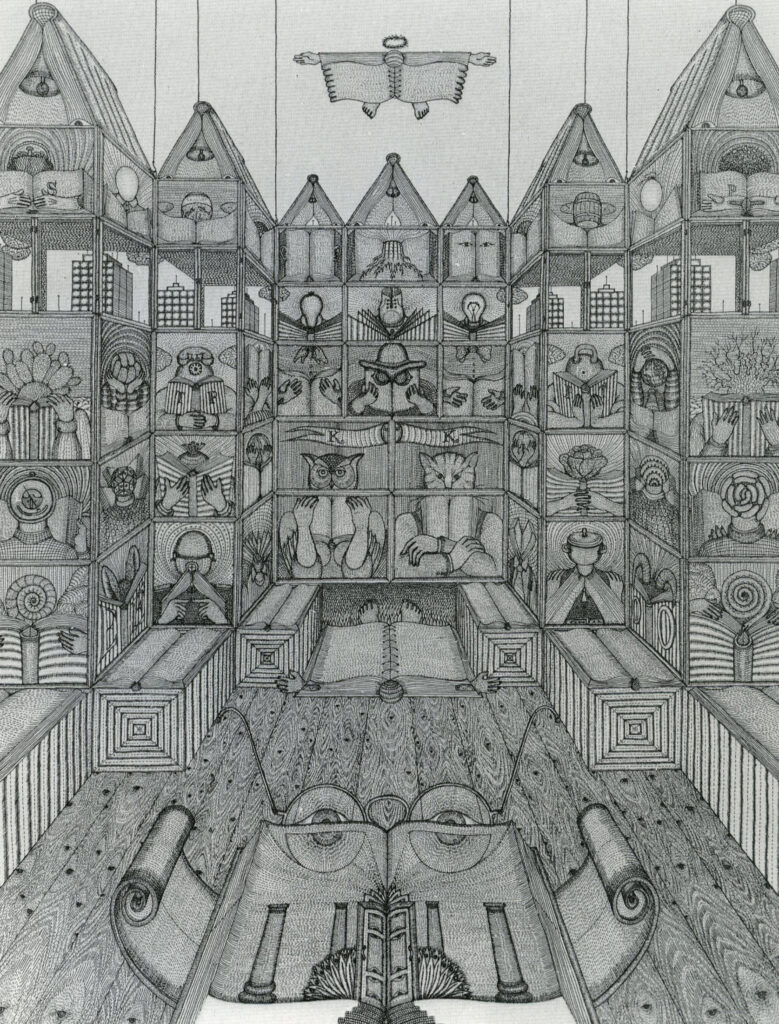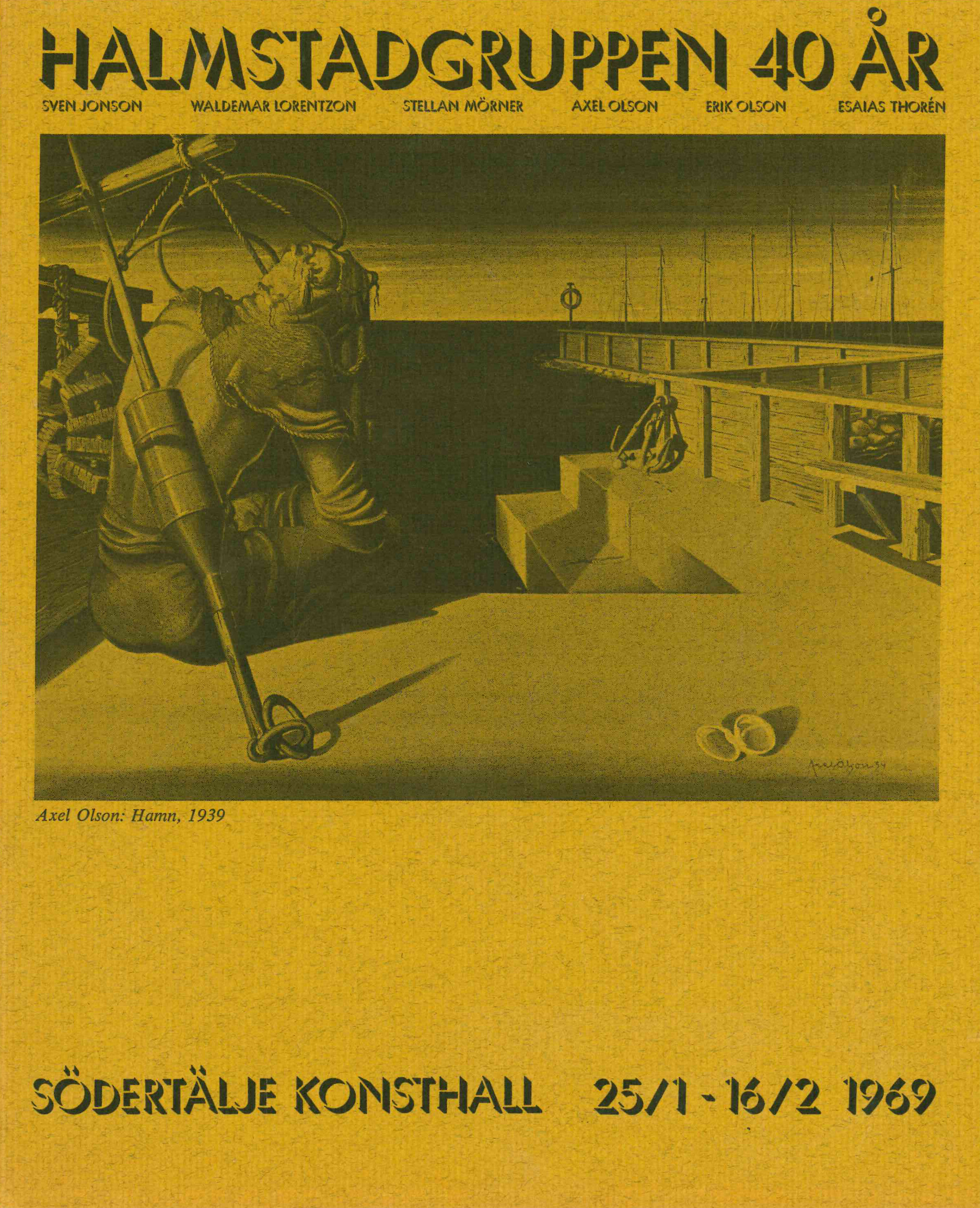


The Halmstad Group has become an institution in Swedish art and therefore it feels right to celebrate the group’s anniversary year, 40. The group was formed very informally in 1929 by six artists, brothers Axel and Erik Olson, Sven Jonson, Waldermar Lorentzon, Stellan Mörner and Esaias Thoren.
The exhibition January-February at Södertälje konsthall is the beginning of the group’s anniversary celebrations during 1969. It will be followed by a number of exhibitions in Sweden and Norway, which have also been planned considering the 40-year anniversary. The Halmstad Group 40 Years(Halmstadgruppen 40 år) is the tenth exhibition at Södertälje konsthall. We are reminded of the international exhibition with which Södertälje konsthall opened in May 1968, The Weavers of Harrania – studio Ramses Wissa Wassef (Vävarna från Harrania – atelje Ramses Wissa Wassef). It presented a number of large and splendid tapestries, colourful images from the world of the Egyptian fellahin. All the works had been selected directly at the site of the rich materials from the latest years in Harranias weaving workshops. An exciting experience, especially for the younger generation, was offered by Gösta Sillens imaginative play on forms, The Labyrinth (Labyrinten). It began the autumn season, in which the international touring exhibition Cuban Painting (Kubanskt måleri), the French poster exhibition from the May revolution of 1968 and The Artist as Agitator (Konstnären som agitator) with its call for debate and protest-filled societal art by 23 current artists from all of Sweden, seemingly most forcefully captured the people of Södertälje and other visitors.
In an article a couple of years ago, Ragnar von Holten, PhD., analysed the development of the Halmstad Group’s artistry and pointed to influences from the international surrealists, for example Magritte, but also emphasised the group’s uniqueness, particularly the Noric feeling for nature and the realism:
“Erik Lindegren’s suggestive poetic commentary on Sven Jonson’s Ecce homo is ten years younger than the painting: it was published in 1947 in Folke Holmer and Egon Östlund’s book about the Halmstad Group… when one looks back at the group’s activity, this poem proves to be an excellent characteristic of motif and spirit in the surrealist compositions from the early 1930s and to the end of the 40s. The fateful, melancholically meditative, the sometimes disillusioned in the face of the threat of war, often make out the foundation of these images; the lighting is steel hard and thunderously clear, people, ruins and fragments cast long shadows; the horizon is distant, almost infinite. The Halmstad Group’s surrealist paintings are of course very aware of their time, and naturally they often show an awareness of other surrealist painters’ art and aims – without a doubt primarily Magritte’s. However, at the same time, the Swedish artists’ canvases carry witness to a sense of nature and a view that appears to be typically Nordic, and that is, as far as I can tell, a conscious style choice. In a letter from Erik Olson to Stellan Mömer (1933), it says: ‘To bring together realism and surrealism is the Halmstad Group’s charge and aim… To cut the contact with nature is simply impossible…’ In this declaration there is a denunciation of the artist’s plane-geometric past, which he shared with many in the group.”
The six Halmstad artists’ importance as pioneers of surrealism in Sweden has been highlighted before and will probably be documented and confirmed even more by art history research, next in the thesis that Jan Torsten Ahlstrand will present at the art history seminar in Lund. Jan Torsten Ahlstrand has in the catalogue written a short introduction to the group’s painting practice. We thank him for this. Primarily we thank the six artists for their help and compliance with the exhibition.
– Eje Högestätt